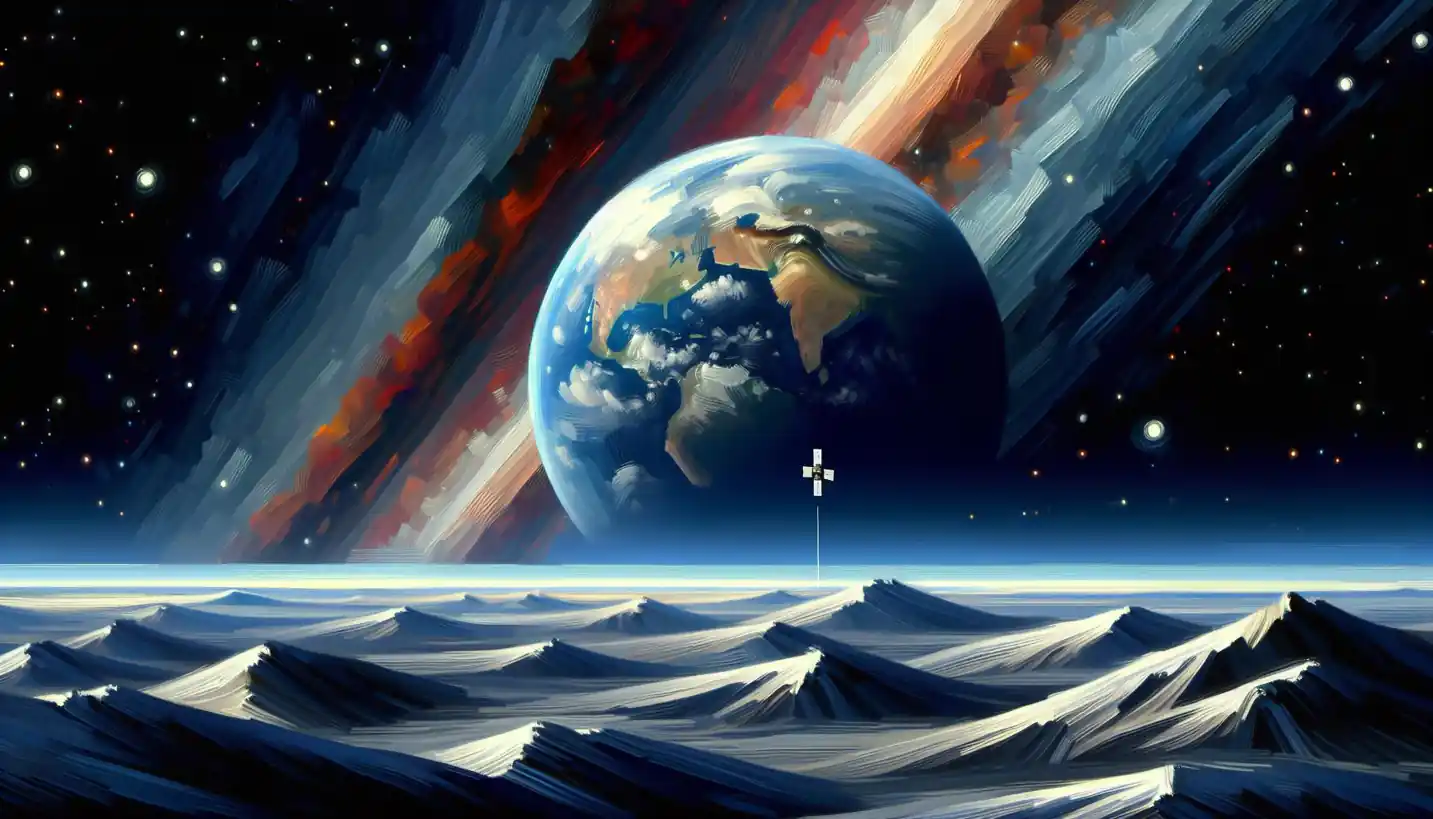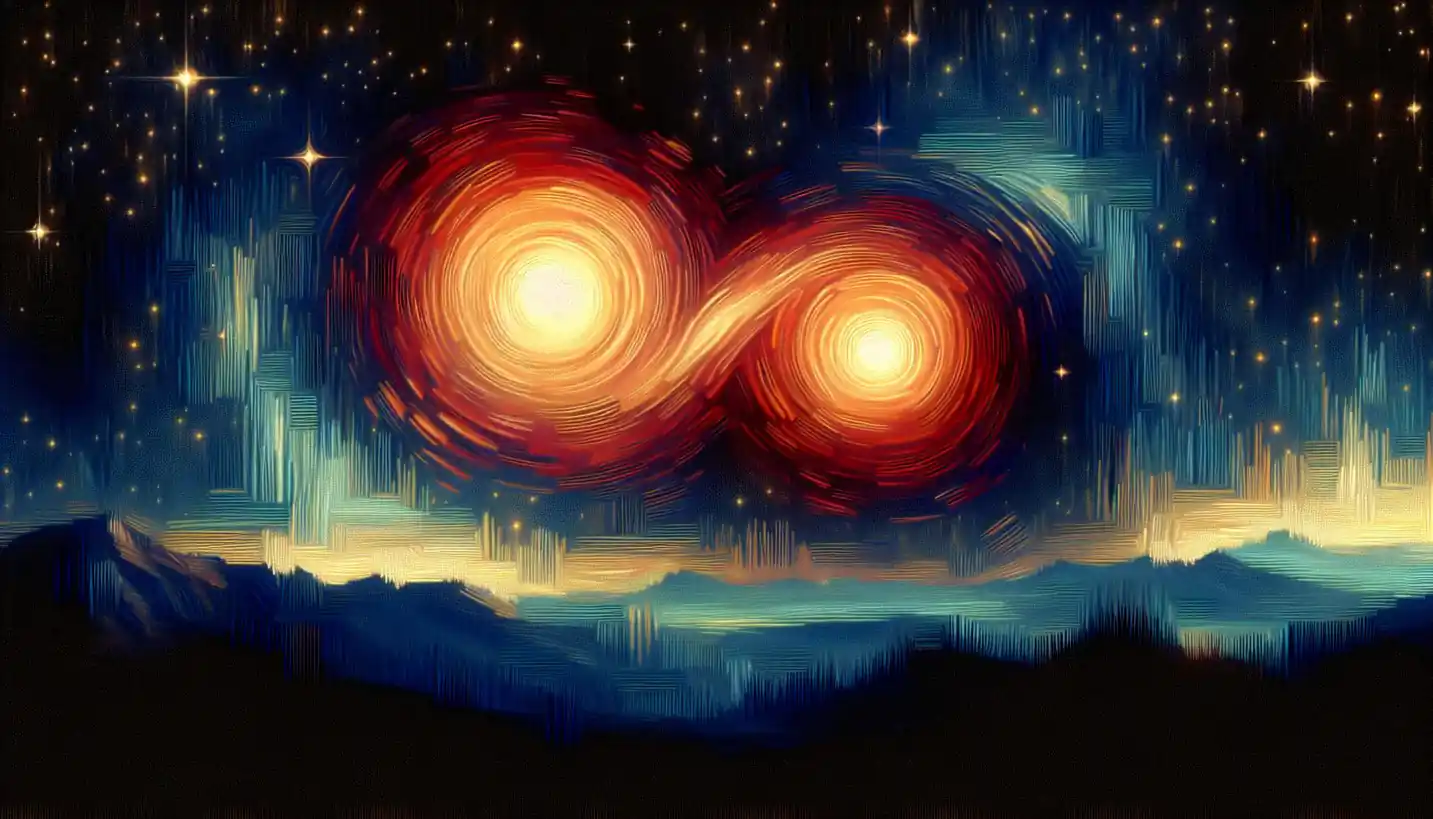· Astronomy · 4 min read
Universe's Large-Scale Structure: The Cosmic Web Unveiled
The universe's large-scale structure forms a vast cosmic web. Dive into the grand tapestry of galaxies and voids that define our cosmos.

Alright, picture the night sky. We see stars, but what lies beyond those sparkling dots? Imagine we’re zooming out, way out into the cosmos. What do we see? Welcome to the vast tapestry of the universe’s large-scale structure, a mesmerizing cosmic web of galaxies, clusters, and mysterious dark matter weaving the universe together.
The Cosmic Web
The universe isn’t just randomly scattered stars and galaxies. Think of it like an enormous spider web. Instead of silk strands, we have galaxies threaded along filaments, with vast empty spaces—voids—between them. Scientists call this the “cosmic web,” and it shapes how everything is organized on a grand scale.
Galaxies and Clusters
Galaxies, those beautiful swirls we often see in space photos, are like the beads within this cosmic net. They usually hang out in groups called clusters. Some of these clusters are massive, housing thousands of galaxies, all interacting through the force of gravity.
Clusters, in turn, group into superclusters, forming even larger structures. But the space between these massive groups isn’t empty—it’s shaped by dark matter.
The Role of Dark Matter
Now, dark matter’s a bit of a puzzle. It doesn’t emit light, so we can’t directly see it. But we know it’s there because it has gravity, and its pull affects how galaxies move. Imagine dark matter as the invisible scaffolding of the universe. It draws galaxies toward it, guiding the formation of the cosmic web.
Dark Energy’s Influence
While dark matter holds things together, dark energy acts as a counterforce. This mysterious energy is driving the expansion of the universe, pushing galaxies apart. It’s like having a game of tug-of-war where both sides have secret weapons changing the game altogether.
From the Big Bang to Now
To fully grasp how this grand design came about, we rewind back to the Big Bang. Initially, space was hot, dense, and uniform. Over billions of years, the universe expanded, cooled, and gravity began to clump matter together. This process turned tiny density differences into the vast cosmic web we observe today.
How We Study the Cosmic Web
You might wonder, how do we actually know all this? Astronomers use powerful telescopes to map galaxies across the sky. Surveys like the Sloan Digital Sky Survey give us enormous datasets to analyze. By studying the distribution and movement of galaxies, scientists can infer the underlying structure of dark matter.
Supercomputers also play a big role. They simulate the universe’s evolution, tweaking parameters to match observations. These models help us visualize and understand how the web’s intricate patterns develop over time.
Why It Matters
Understanding the universe’s large-scale structure isn’t just about satisfying our cosmic curiosity. It helps us unlock fundamental mysteries about the universe’s origins, its fate, and the fundamental forces at play.
The Quest for Answers
Every discovery leads to more questions. What exactly is dark matter? And what’s driving the mysterious dark energy? These puzzles are at the frontier of cosmology. Future missions and more advanced telescopes might provide the keys to these mysteries, offering new insights into the very fabric of our cosmos.
An Open Road Ahead
As we look to the future, the study of the universe’s large-scale structure remains one of the most exciting fields in astronomy. With every observation, we inch closer to understanding the incredible complexity of the universe. Imagine what we have yet to see and discover in this grand cosmos.
The cosmic web isn’t just a map of the universe; it’s a story still being told, an epic tale of gravity, time, and the unending dance of galaxies across the universe. As we continue to decipher this celestial puzzle, the universe invites us to explore further, sparking wonder and curiosity in the cosmic dance of creation.
This article aims to shed light on the magnificent and intricate structure of the universe. Whether it’s tackling the mysteries of dark matter and energy or unraveling the stories told by clusters and superclusters, the large-scale universe is a field brimming with awe and untapped knowledge. Keep looking up, for there’s always more to discover among the stars.



